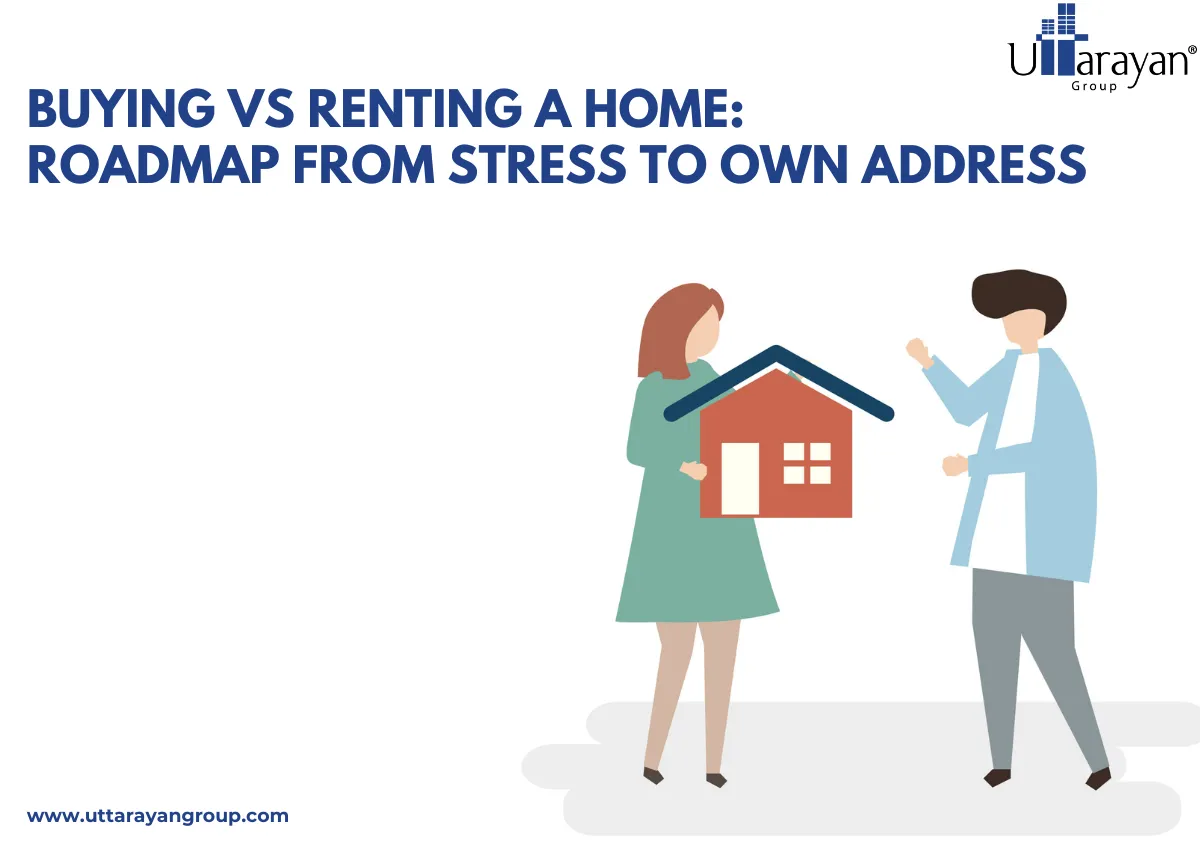Get Support
+91 98540 40005
Comparative Analysis: Real Estate Growth In North East Vs. Other Indian Regions
.webp)
Real estate growth in India has been a subject of extensive discussion and analysis, given its critical role in the nation's economic development. Understanding the finer points of this growth, primarily through a regional lens, is essential for investors, developers, and policymakers. This blog gives you a comparative analysis of real estate growth in North-East India versus other Indian regions, providing insights into the dynamics, opportunities, and challenges specific to these areas.
Overview of Real Estate Growth in India
The real estate market in India has witnessed significant transformations over the past few decades. The market has grown substantially and is driven by rapid urbanization, economic development, and favorable government policies. Real estate growth has been particularly pronounced in urban areas, where the demand for residential and commercial properties continues to rise.
Diverse segments, including housing real estate, commercial real estate, retail, hospitality, and industrial spaces, characterize the real estate market in India. Each segment contributes uniquely to the overall market dynamics, influenced by population growth, income levels, and infrastructural developments. Despite its growth, the market faces regulatory complexities, economic fluctuations, and the need for sustainable development practices.
Real Estate Growth in North East India
North East India, which includes states like Assam, Meghalaya, and Manipur, has great potential for real estate growth. Historically, this region hasn't seen as much development as other parts of the country, but this is changing.
Guwahati, the largest city in Assam, stands out as a key contributor to real estate growth in the North East. The demand for residential properties, including flat at Guwahati, has been on the rise due to urbanization and improved connectivity. Guwahati's strategic location, serving as a gateway to the North East, further boosts its real estate prospects.
Apart from residential developments, commercial real estate in the North East is also gaining traction. Major cities of the North-East are witnessing a surge in commercial projects, catering to the region's growing business and retail needs. Infrastructure development, such as road and rail connectivity, is playing a crucial role in unlocking the region's real estate potential.
Real Estate Growth in Other Indian Regions
Compared to the North East, other regions of India have long been centers of real estate growth.
- North India: Cities like Delhi, Gurgaon, and Noida are prominent hubs of real estate hubs of real estate market in India. Proximity to the national capital, strong infrastructure, and a booming commercial sector drive growth. Housing real estate here caters to the high demand for residential properties.
- South India: Cities like Bangalore, Chennai, and Hyderabad are known for their IT and industrial hubs. Major IT companies and a cosmopolitan population drive significant residential and commercial real estate investments.
- Western India: Mumbai and Pune are hotbeds for real estate market in India. As the financial capital, Mumbai sees continuous demand for high-end residential and commercial properties. With its industrial and educational sectors, Pune also shows strong real estate growth.
- Central India: Cities like Bhopal and Indore are emerging real estate market in India and are driven by improved infrastructure and government initiatives.
Types of Real Estate Developments
The Housing Real Estate
The housing real estate sector in North East India is seeing varied developments, from affordable housing projects to luxury apartments. Government schemes like Pradhan Mantri Awas Yojna (PMAY) promote housing for all and further fuel this growth. Cities like Guwahati are witnessing a surge in demand for modern living spaces, particularly with the concept of residential flat at Guwahati becoming increasingly popular among young professionals and families.
In comparison, the rest of India has well-established housing real estate in cities like Delhi, Mumbai, and Bangalore. These cities offer a mix of high-end luxury apartments, mid-range housing, and affordable housing projects. The demand in these regions is driven by urbanization, economic opportunities, and better infrastructure.
Commercial Real Estate
The commercial real estate segment in North East India is expanding with new shopping malls, office spaces, and business parks. Improved connectivity and infrastructural developments are key drivers of this growth. Cities like Shillong and Guwahati are seeing a rise in commercial projects catering to the retail, hospitality, and corporate sectors.
In contrast, commercial real estate in other parts of India, such as Mumbai, Bangalore, and Gurgaon, is characterized by high demand and significant investment. These cities are known for their tech parks, corporate offices, and retail spaces, attracting national and international businesses.
Comparative Analysis
Factors Driving Growth in North East vs. Other Regions
The real estate market in India's North East region has been experiencing significant growth due to several unique factors:
- The North East's proximity to international borders enhances its role in cross-border trade and commerce. Improved connectivity and ongoing infrastructure development
- Ongoing infrastructure development, including roads, railways, and airports, improves access and boosts real estate growth.
- Policies like the North East Industrial and Investment Promotion Policy (NEIIPP) specifically target the region and attract investment.
- The North East, however, is witnessing a rise in affordable housing projects, such as residential flat at Guwahati.
- There is a notable focus on eco-friendly developments, aligning with the region's natural beauty and sustainability goals.
While in contrast with other regions of India, the factors that contribute are:
- Regions like the West and South of India, particularly metro cities like Mumbai, Bengaluru, and Hyderabad, see growth primarily driven by urbanization, IT, and industrial sectors.
- These regions have a more established real estate market in India with higher property prices and a strong demand for luxury housing.
Comparative Analysis of Market Trends, Opportunities, and Challenges
Market Trends: The North East is gradually becoming a real estate hotspot, with Guwahati emerging as a key city. The trends here are driven by increasing demand for residential properties, especially from NRIs and investors looking for second homes. In contrast, the Western and Southern regions are seeing a saturation in residential demand, with a shift towards commercial and industrial real estate.
Opportunities: The North East region offers immense opportunities due to its largely untapped real estate market. Uttarayan Group is capitalizing on this by developing innovative and sustainable residential projects in key locations, particularly flat at Guwahati, which is emerging as a real estate hotspot. Investors can benefit from lower land costs and the potential for high returns as infrastructure projects, like the Trans-Arunachal Highway and Smart Cities Mission, are completed.
Challenges: Despite its potential, the North-East faces infrastructural bottlenecks, political instability in some areas, and a lack of skilled labor. These challenges are less pronounced in other regions where infrastructure is more developed and the political environment is relatively stable. However, these challenges in the North-East also represent opportunities for investors willing to take calculated risks for potentially higher returns.
Investment Potential in the North-East Compared to Other Regions
Unlike the saturated markets in Western and Southern India, where competition is fierce and property prices are already high, the North East provides a unique opportunity for investors to enter early. Uttarayan Group's focus on affordable housing and eco-friendly developments aligns with the region's growing demand, positioning the company as a key player in the North East's real estate growth.
Uttarayan Group is at the forefront of this growth, offering a range of residential flat at Guwahati and commercial projects that cater to the region's evolving needs. While other regions like Maharashtra and Karnataka offer immediate returns due to their mature markets, the North-East is an excellent option for investors looking to diversify their portfolios with potentially high returns in the coming years.
This comparative analysis of real estate growth in North-East India versus other regions highlights each area's unique opportunities and challenges. With its strategic location and untapped potential,the North-East is set for significant growth in the coming years. Meanwhile, other regions continue to thrive, driven by established markets and robust infrastructure.
Real estate stakeholders should consider these regional dynamics to make informed investment decisions. As the North-East emerges as a promising real estate destination, it offers a compelling case for diversification and long-term investment. The future of real estate market in India will be shaped by the growth of both established and emerging regions, making it an exciting sector to watch.
FAQs
How much does a flat cost in Guwahati?
The cost of flats in Guwahati varies based on the size and type of the unit. A 2 BHK flat typically ranges from ?18 Lac to ?62 Lac, while a 3 BHK flat can cost between ?43.5 Lac and ?1.3 Cr. For larger units, 4 BHK flats are priced from ?95 Lac to ?1.65 Cr, and 5 BHK flats are available at ?2.75 Cr. Prices depend on factors like location, amenities, and the reputation of the builder.
Is buying a flat a good investment?
Yes, buying a flat can be a good investment, especially in a growing city like Guwahati. Property values tend to appreciate over time, providing the potential for long-term financial gains. Additionally, owning a flat can generate rental income and offer tax benefits. However, the investment's success depends on factors like location, property quality, market trends, and individual financial goals. It’s important to do thorough research and consult with real estate experts before making a decision.
Is Guwahati costly?
No, Guwahati is not considered a costly city to live in. To maintain a standard, normal lifestyle, you typically need around ?15,000 per month. The cost of living is relatively affordable compared to other major cities. If you earn between ?20,000 and ?30,000 per month, you can enjoy a comfortable life in Guwahati, covering basic expenses like housing, food, and transportation without much financial strain.
Is Guwahati a fast growing city?
Yes, Guwahati is one of the fastest-growing cities in India. Located on the south bank of the Brahmaputra River in Assam’s Kamrup district, it is a key urban center in the region. Known as the "City of Temples," it houses important ancient shrines like the Kamakhya Temple and offers scenic views of the Brahmaputra River. Guwahati’s strategic location and its role as a major riverine port make it a hub for economic and infrastructural development, driving its rapid growth.
Looking for a dream home?
We can help you realise your dream of a new home.




1 Comments
Rishav Raj
6th February, 2025Check out Ashiana Housing Projects, where you'll find carefully designed Senior Living Homes, elegant Premium Homes, family-friendly Kid-Centric Homes, and luxurious Elite Homes. Checkout Ashiana Housing Projects. Thank you